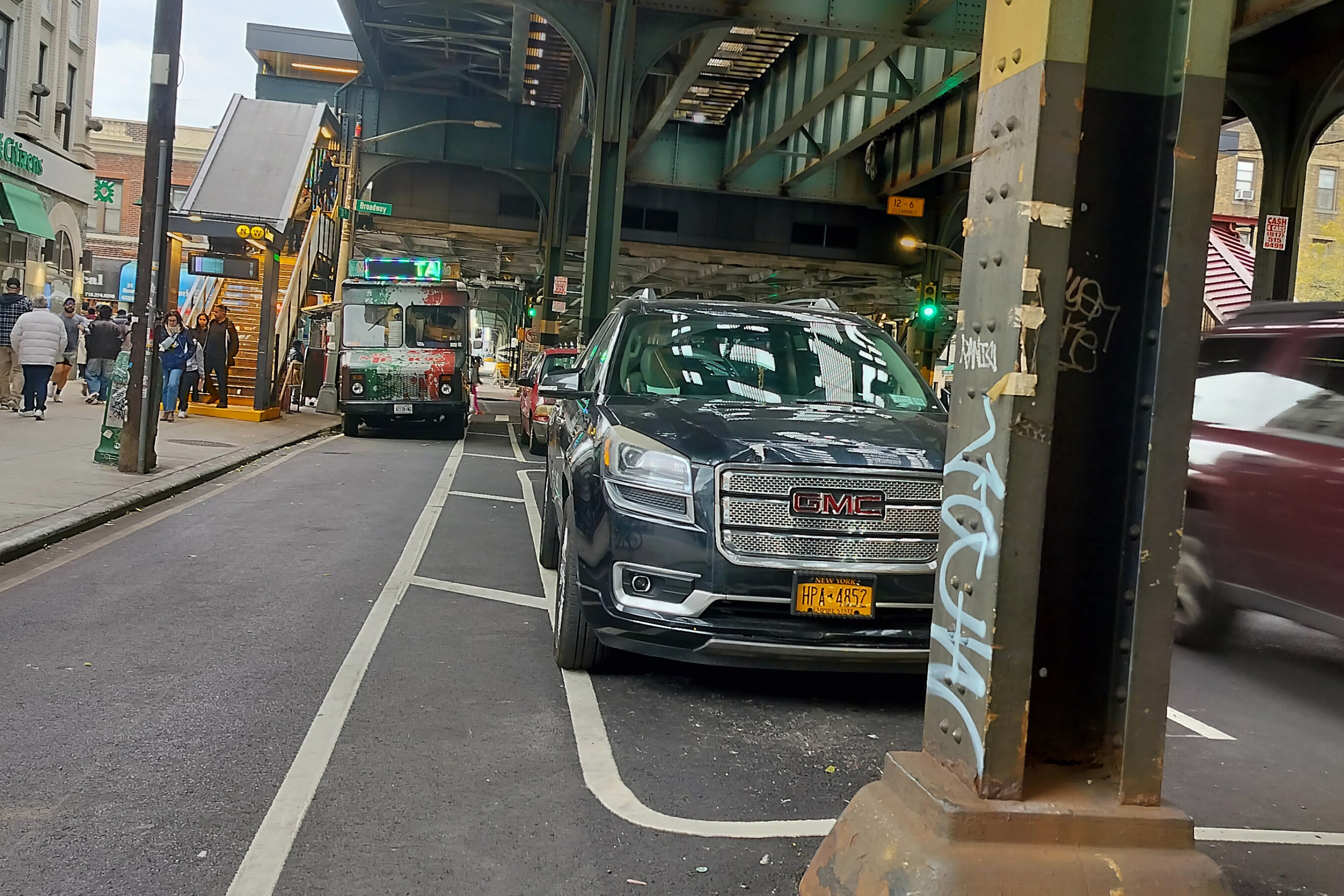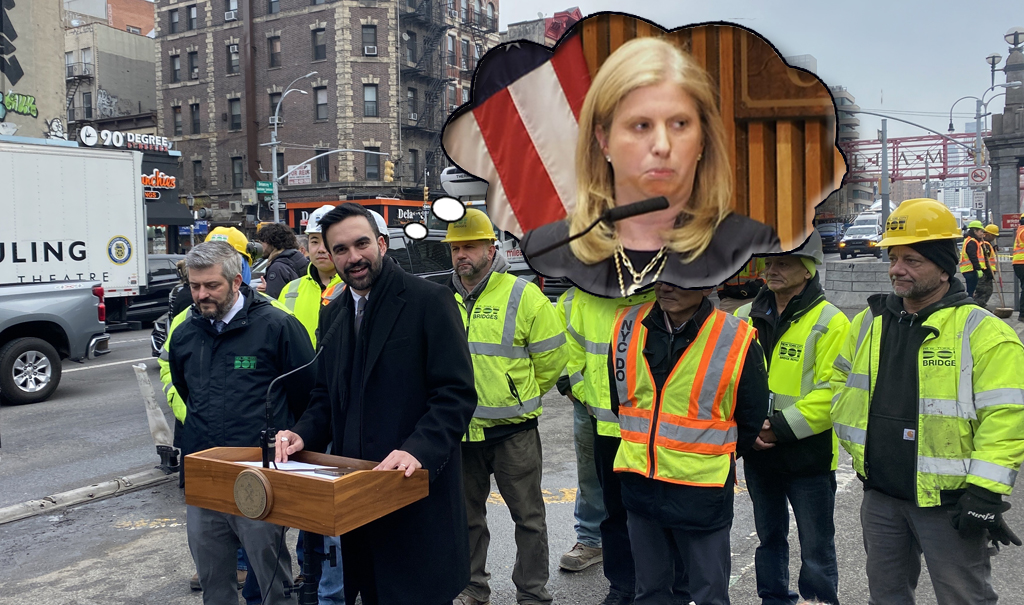Call it the battle of who could care less.
The Department of Transportation — which admitted again at an oversight hearing on Tuesday that it failed to meet existing infrastructure benchmarks last year — rejected an entire slate of City Council safety bills on the grounds that the proposed legislation won't help the agency do better this year.
Transportation Commissioner Ydanis Rodriguez testified that his agency supports "the intent" of the bills, but has "concerns about their effect on the agency’s ability to make the appropriate safety changes on our streets. Streets are dynamic and conditions are constantly changing. We need to be nimble." The irony, of course, is that the very benchmarks that Rodriguez failed to meet in 2022 were the ones that he spearheaded when he was the Council's Transportation Committee chairman.
The flat out rejection came as a shock to his successor, Council Member Selvena Brooks-Powers (D-Queens), who expressed deep disappointment.
“It sounds, unfortunately, like DOT is not supporting any of the bills,” she said following DOT’s testimony. “The council thinks these are important bills.”
It's not clear that they are. The seven bills would not directly address the DOT's shortcomings on the the Streets Plan, and not all of them were seen as high priorities by advocacy groups such as Transportation Alternatives or Open Plans.
"While we appreciate this hearing today, we believe much more needs to be done to truly make our streets safe," Open Plans's Chief Strategy Officer Sara Lind had testified.
And other advocates were more critical that the Council package is an easy legislative win that won't make an impact.
“All eight bills are a step forward, but the truth is, they don't go nearly far enough,” said Amy Cohen, whose son, Sammy, was killed by a speeding driver in Brooklyn in 2013.
“Yes, we need safety signs, daylighting, slower speed limits in our open streets, and studies. But we desperately need bold action. We need rapid implementation of the proven traffic calming and design changes needed to ensure that every street, across the city, is safe to navigate for our children, our seniors, and all New Yorkers.”
Before the hearing, Brooks-Powers was asked by Streetsblog about characterizations such as Lind's and Cohen's that the package amounts to "low-hanging fruit ... that advocates aren't calling for." She promised that there’s “more to come.”
“There's going to be a number of other hearings that package traditional bills," she said. "These infrastructure items are items that can save lives, as it was just stated, it's been proven to save lives. We're looking to do whatever we can to make sure that we are moving the city forwards and having safer streets."
Here's the package:
- Intro 369: Would require DOT to install "reflective material" on at least 250 bollards, curbs, posts, and roundabouts in each borough.
- Intro 415: Would require DOT and NYPD to study "driving behavior to determine what behaviors are associated with traffic crashes, injuries and fatalities."
- Intro 555: Calls for DOT "to paint school safety signs and install overhead school safety signs on each street where a school entrance is located to alert drivers to the presence of school-aged children and pedestrians."
- Intro 679: Would require the DOT to annually install at least one traffic-calming device on at least 50 blocks adjacent to senior centers or naturally occurring retirement communities unless "doing so would endanger the safety of motorists or pedestrians, or would be noncompliant with the Department’s traffic control device guidelines."
- Intro 805: The DOT would be required "to accelerate the schedule in which the agency conducts the study of traffic crashes involving a pedestrian fatality or serious injury required by local law from every five years to every three years."
- Intro 854: Would require the DOT to daylight a minimum of 100 intersections a year.
- Intro 879: Would require the DOT to "install bollards, where necessary, at sidewalks, curb extensions and pedestrian ramps being reconstructed to make them accessible for pedestrians with a disability" and "conduct a study on the effectiveness of bollards in high pedestrian traffic areas."
The package also included a resolution that DOT has long said it supports. Intro 441 calls on the State Legislature to pass a bill to allow New York City to set a five mile per hour speed limit on open streets.
The Tuesday oversight hearing always promised potential fireworks. After all, 2022 was the first year of the Adams administration — and the first year that City Hall was required by the Council's landmark 2019 Streets Plan to meet certain benchmarks for safety infrastructure. On Tuesday, DOT admitted that it had installed just 4.4 miles of 20 miles of required protected bus lanes, 26.3 miles of protected bike lanes out of its mandated 30 miles, and upgraded just 14 bus stops out of the required 500.
Yet even as he admitted that it has failed to meet those benchmarks, Rodriguez said the package of bills are a set of handcuffs.
"We urge the Council to allow us to retain flexibility to determine which treatments will be most effective in each location based on our data-driven safety criteria and our professional engineering judgment," he testified. He used the word "flexibility" repeatedly, though other parts of his testimony showed it's a double-edged sword. For example, he blamed the DOT's slow roll on "challenges with agency capacity" — a flexibility issue he controls.
DOT has 4 percent fewer staff than it did in 2019, and 14.3 percent fewer staff specifically in the Transportation Planning and Management Division, which is tasked with much of the work discussed during the hearing, Rodriguez said.
“While we are excited about expanding our operations, like with many sectors of the economy and municipal governments across the country, DOT is facing hiring challenges in the post-pandemic environment,” the commissioner said.
We’re at City Hall with @CMBrooksPowers and @TransAlt rallying for street safety ahead of @NYCCouncil’s hearing today.
— Families For Safe Streets (@NYC_SafeStreets) February 14, 2023
Vision Zero is possible with action from our leaders. pic.twitter.com/CnC794yapp
Brooklyn Council Member Lincoln Restler questioned how the agency can “Get Stuff Done” — Mayor Adams’ signature slogan for his administration — without the proper staff.
“I know your hearts in the right place, commissioner, but you can't do the work if you don't have the staff," Restler said. "I am deeply troubled by this administration’s commitment to financial austerity and shrinking the size of government at the expense of achieving the goals that you are espousing and intending to actually implement."
"We suffered as many deaths from gun violence last year as traffic violence. These are preventable deaths that we can avoid but we need the staff to actually do the work to install the bike lanes to install the bus lanes to ensure the ped safety improvements are made.”






